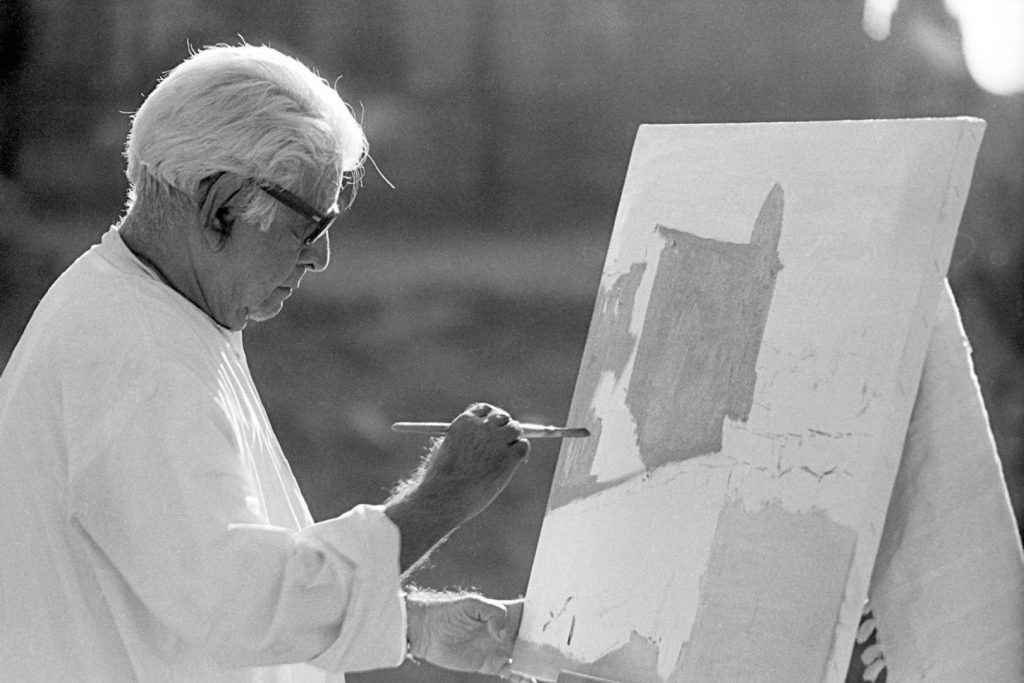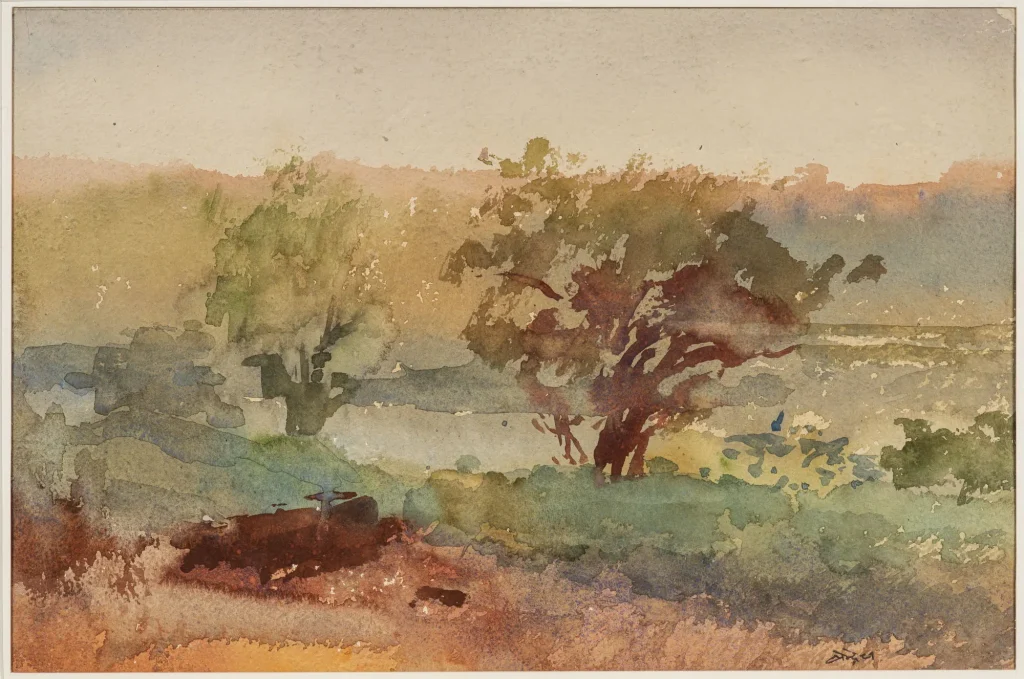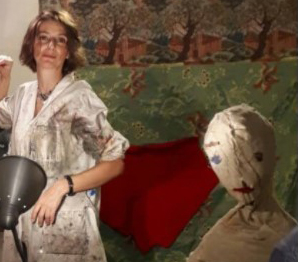Narayan Shridhar Bendre stands as one of the most influential figures in 20th-century Indian art, a visionary who bridged traditional Indian aesthetics with European modernist movements. As a founding member of the celebrated Baroda Group and a pioneering educator, Bendre’s legacy extends far beyond his own artistic achievements to encompass his profound impact on generations of Indian artists.
Early Life and Formation
Born in Indore, Madhya Pradesh, Bendre’s artistic journey began at the State Art School in his hometown. His formative years were shaped by the quasi-modernist landscape painting traditions of the Indore School, which would remain a cornerstone influence throughout his career. After completing his Government Diploma in Art from Bombay in 1933, Bendre quickly established himself as a promising young artist, earning early recognition with a Silver Medal from the Bombay Art Society in 1934, followed by the prestigious Gold Medal in 1941.
Artistic Evolution and International Exposure
Bendre’s artistic development was marked by constant evolution and experimentation. His early work, characterized as academic and impressionist, focused primarily on landscapes and portraits rendered in oils and gouache. A pivotal moment came in 1945 when he served as artist-in-residence at Santiniketan, where he encountered luminaries such as Nandalal Bose, Ramkinkar Baij, and Binode Behari Mukherjee. This exposure to diverse artistic philosophies, coupled with his meeting with Jamini Roy in Calcutta, broadened his artistic horizons considerably.
The watershed moment in Bendre’s career came with his journey to the United States in 1947, where he held a solo exhibition at the Windermere Gallery, New York, in 1948. His return journey through Europe provided crucial exposure to original works by modernist masters, fundamentally altering his artistic vision. When he returned to India in March 1948, he found a newly independent nation with an art scene energized by the Progressive Artists Group movement.

The Baroda Years: Innovation and Institution Building
In 1950, Bendre embarked on what would become the most transformative phase of his career, moving to Baroda as the first Reader and Head of the Department of Painting at the Faculty of Fine Arts. His sixteen-year tenure there, during which he became Dean in 1959, was marked by revolutionary changes in Indian art education and his own artistic practice.
It was at Baroda that Bendre produced his most acclaimed works, experimenting boldly with Cubist, Expressionist, and abstract tendencies. Masterpieces such as “Thorn” (1955), which earned him the National Award, along with “Sunflowers,” “The Parrot and the Chameleon,” demonstrated his remarkable ability to synthesize European modernist techniques with distinctly Indian formal and thematic elements.
The formation of the Baroda Group in 1956 represented the culmination of Bendre’s vision for a new Indian modernism. Along with his first-generation students, this collective held regular exhibitions across major Indian cities, providing unprecedented exposure to the innovative work emerging from the Baroda art school and establishing a new paradigm for contemporary Indian art.
Legacy and Honors
Bendre’s contributions to Indian art were recognized through numerous prestigious awards and honors. The Padma Shri in 1969 and the Padma Bhushan in 1992 acknowledged his national significance, while his appointment as chair of the International Jury at the Second Triennale in New Delhi in 1971 and his fellowship of the Lalit Kala Academy in 1974 recognized his international stature.
The retrospective exhibition at the Lalit Kala Academy in 1974, the Aban-Gagan Award from Vishwa Bharati University in 1984, and the Kalidas Samman (1986-87) from the Madhya Pradesh government further cemented his position as one of India’s foremost artists.
Artistic Philosophy and Impact
Bendre’s greatest achievement lay in his ability to remain authentically Indian while embracing international modernist movements. His landscapes, whether rendered in early impressionist style or later abstract interpretations, consistently reflected a deep connection to the Indian environment and sensibility. As an educator, he revolutionized art pedagogy in India, nurturing a generation of artists who would continue his legacy of innovation and cultural synthesis.
Narayan Shridhar Bendre’s life and work represent a masterful navigation of the complex terrain between tradition and modernity, local identity and global consciousness. His artistic journey mirrors that of modern India itself – rooted in ancient traditions yet boldly embracing contemporary currents. Through his paintings, teaching, and institutional building, Bendre created a lasting foundation for modern Indian art that continues to influence artists and art movements to this day.
Featuring Image Courtesy: Vadehra Art Gallery
Contributor





